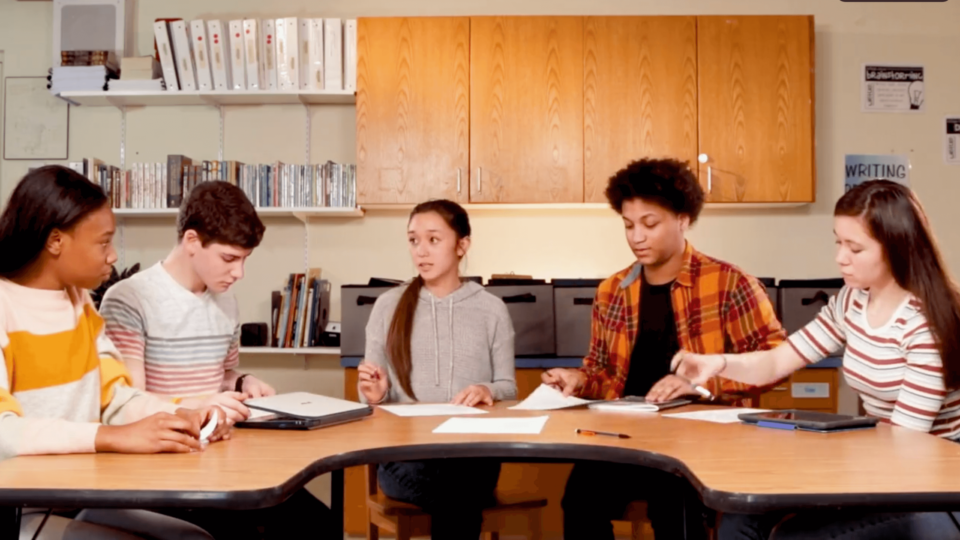
Iris, here! Do you ever feel like a fish out of water? I definitely have! Give yourself some credit if you’ve felt that way too.
Feeling out of place requires a certain level of situational awareness. Situational awareness means being aware of your environment, social dynamics, and situational cues. Situational awareness can help us read the room and is a key skill for developing and maintaining relationships.
Every learner is different. Some learners may be extremely situationally aware, while others may need a little extra support. This is where our teaching and practice comes in!
What I Use to Teach Situational Awareness:
How I Teach Situational Awareness:
The video, Social Chameleon Introduction (5 minutes), shows how to use the 3 Skill Steps:
2. 
3. 
Once you’ve reviewed and discussed the video, try one of the following exercises to support your students in practicing their situational awareness skills:
Use role-play exercises and games to help learners bridge the knowledge to application gap. This could include:
- I Spy – Put a social spin on the traditional game of “I Spy.” Someone might say, “I spy with my little eye someone who is lying on his arm and looks a little tired.” Have learners move around, freeze and observe.
- Mirror Mirror – Pair up learners and ask them to mime, or copy, each other’s nonverbal communication. Learners may be surprised to see what other people notice about them.
- Social Chameleon – Ask one learner to leave the class while other learners set up a scene, such as in a cafe, classroom, playground, or movie theater. Make it extra special by adding costumes or props. Then, ask the learner who left to rejoin the class. Challenge them to determine what scene they’re entering, then ask them to interact with the other actors in a way that fits the setting.
For learners who shy away from role-play exercises, Everyday Speech World (ESW) is a great alternative. ESW offers learners the opportunity to practice navigating social situations without the pressure of acting in front of the class.
ESW offers both a Social Chameleon and Working with a Group chapter. Both topics are referenced in the above video.
Everyday Speech’s Situational Awareness unit also includes the following goals and corresponding videos:
- Thinking About Others
- Reading the Room
- Restaurant Rules (Mealtime Behaviors)
- Being a Social Chameleon (Adapting to New Places)
If your group has the means to take field trips into the community, do it! If not, take time to visit other staff and classrooms, or take on a community project. This will give your learners practice integrating the skills they master in the smaller clinical setting or speech room into their wider community interactions.
Another idea is to get learners’ permission to video record their interactions with others. This will provide them with an audio-visual reference to reflect on later.
Pushing into general and special education classrooms also helps support inclusion for our learners. This allows you, as a staff member with social communication expertise, to model language and strategies for teaching staff and classroom students. It will also help you to see what social chameleon challenges your learners face in real-time.
For more no-prep videos and materials, try a free 30-day trial of our Social Communication Curriculum!
Look forward to hearing how your learners take their newfound social chameleon skills into their communities.
Happy teaching!
About the Author:
Iris Wong joined Everyday Speech as a contributor in 2021. Over the last decade, she has been a Speech Language Pathologist in PreK-12 public schools, private practice, international schools and community health based early intervention. She currently lives in the San Francisco Bay Area with her husband, two kids and senior dog. Visit her at https://www.linkedin.com/in/iris-l-wong/



